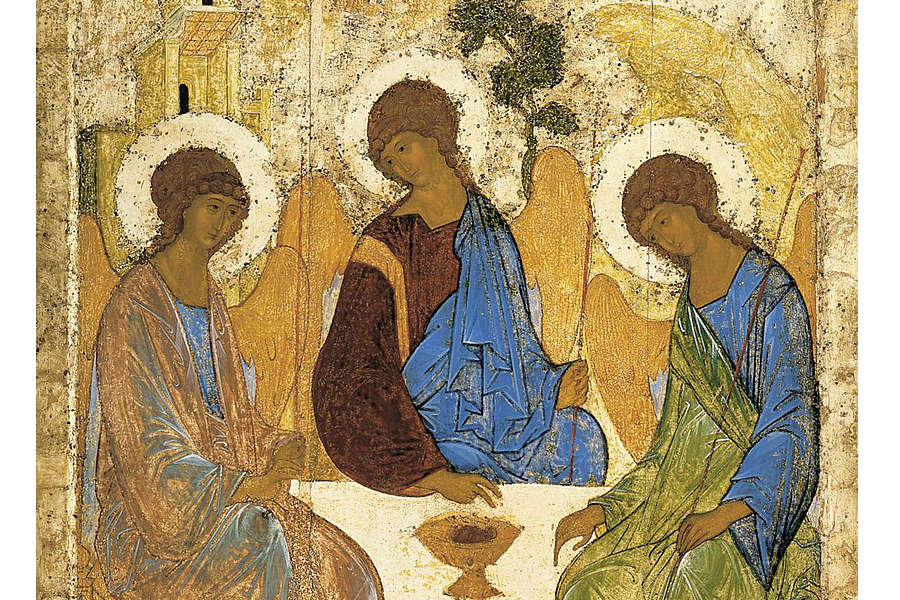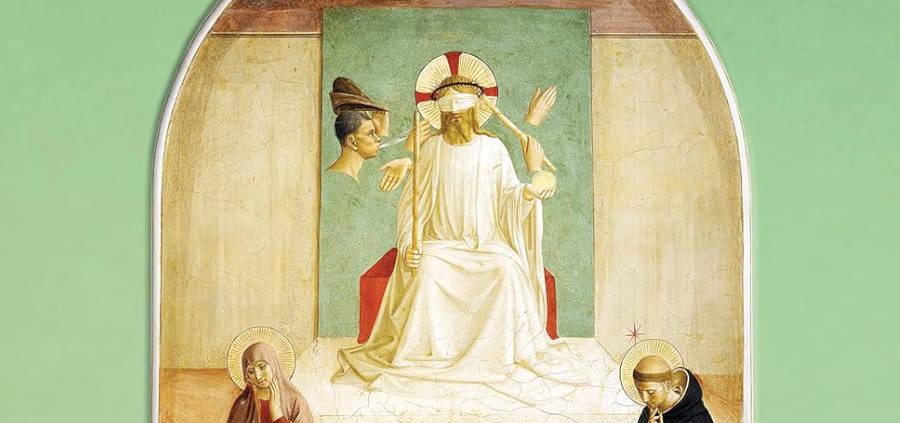God without the Idea of Evil: Part IV—Destined from the Foundation of the World by Gregory Casprini, OSB
We continue this week a multipart feature by Gregory Casprini, OSB, on his recent translation of Dominican theologian Jean-Miguel Garrigues’s God without the Idea of Evil (University of Notre Dame Press, 2023). As with the “Doors to the Sacred” series by John Alonzo Dick that we published in 2022, we conceive of Fr. Casprini’s feature as a kind of seminar or “retreat in writing” that explores the idea of a God who simply “cannot comprehend” the evil in the world. Fr. Casprini’s text is based on a presentation he gave about the book in Lithuania, and captures the way such a presentation prompts prayer and reflection in the hearer or reader. In the interest of full disclosure, TAC’s editor assisted with the preparation and submission of both manuscripts mentioned in the text, and receives a portion of royalties for any copies sold. Part I of this series, “The Origins of a Translation,” is available here; part II, “The Goodness of Human Freedom,” is available here; and part III, “The Twofold Gaze of the Lord,” is available here—Ed.
In his autobiography, Jean-Miguel Garrrigues says that the opening hymn of thanksgiving in St. Paul’s letter to the Ephesians (Eph 1:3-10) contains an important key to the interpretation of divine revelation, counterbalancing Martin Luther’s (1483–1546) perhaps overly subjective principle of justification by faith alone. This key is based on God’s antecedent will, his benevolent plan of adoption prepared from all eternity. The Epistle to the Ephesians says: “Blessed be the God and Father of our Lord Jesus Christ, who has blessed us in Christ with every spiritual blessing in the heavenly places, just as he chose us in Christ before the foundation of the world to be holy and blameless before him in love. He destined us for adoption as his children through Jesus Christ, according to the good pleasure of his will, to the praise of his glorious grace that he freely bestowed on us in the Beloved” (Eph 1:3-6).
God had no need to create the world. His life in the Trinity is complete and in itself a perfect and infinite communion of knowledge and love between three divine persons. God lacks nothing. But out of an excess of goodness—for goodness naturally tends to give of itself to others—God freely chose to go out of himself and create the world. The purpose of creation, its orientation, was to create human beings in the image of God so that they could freely respond to the invitation to receive God’s friendship and to participate in the life of the Trinity as adopted children, sons and daughters of the heavenly Father in his eternal Son.
This is also a reminder of the Genesis creation story. When God creates the heavens and the earth, he begins by giving orders almost impersonally, like a general or an all-powerful ruler, saying, “Let there be light” or “Let the earth bring forth living creatures of every kind” (cf. Gen 1:3-24). In this way he creates and establishes things outside of himself, things that do not participate in his inner life, do not truly reflect his image, and do not resemble him. However, in creating man, God consults not only the angels, but above all himself, i.e., the other two divine persons, the Son and Holy Spirit. “Let us make humankind in our image and according to our likeness” (Gen 1:26). In doing so, God opens his fatherly heart, revealing his deep, personal self and the true purpose of creation. From all eternity we have been created in the image of God, in that perfect image which is none other than his Son in the Trinity. And under the guidance of the Son of God, we are called to perfect the image imprinted in us, becoming more and more like God, who is love.
Let us now return to Ephesians, where the apostle Paul tells us that the Father chose us in Christ before the foundation of the world. Garrigues points out that the Son of God, the second person of the Trinity, is already called Christ, Messiah, the Anointed One, not as a man from the moment of his incarnation, but also as God from all eternity, because the Father anointed him before the creation of the world, entrusting to him from the very beginning the mission of fulfilling the design of our adoption in him. That design, God’s kindhearted will, the invitation he addresses to us to become his adopted children, corresponds to God’s antecedent will. He creates us, chooses us, and calls us before any consideration of what our future responses will be.
According to the Father’s design, it is the Son who as his Word and wisdom takes full responsibility for our adoption. This implies that if anything goes wrong, if we fail to respond adequately to the Lord’s initial invitation, the Son is ready to do whatever it takes to set things right. In a certain sense, God in the person of his Son makes himself vulnerable, opening himself to the risk of being rejected by human freedom. From the very beginning, therefore, the Son of God takes on the form of a vulnerable lamb: that is why the First Letter of Peter compares Christ who shed his blood for us to “a lamb without blemish and without spot” and who was “destined before the foundation of the world but was revealed at the end of the ages for your sake” (1 Pet 1:19-20). The apostle Peter does not say that the lamb was sacrificed or killed before the foundation of the world, but only destined or foreseen. For in God’s original design there was only a risk that the lamb would be rejected.

Detail from Andrei Rublev’s icon of the Trinity, ca. 1425
Andrei Rublev’s icon of the Trinity is an illustration of God’s antecedent will, his benevolent call to man. We are invited to participate in the life of the Trinity, in the divine banquet. The three angels, symbolizing the three divine persons, are seated at the table. The central figure is likely Christ. On the table is a chalice, which represents our free will, the gift that God gave us when he created us. A closer look at Rublev’s original icon reveals that there is a lamb inside the cup: in the cup we receive the offer to share in the life of the Trinity in and through the eternal Son of God. He is already presented to us as an innocent, vulnerable lamb, because he opens himself up to us and offers himself with selfless love and total goodness, without any protection. There is the risk that in our freedom we will refuse to accept him. Because of our free will, we have the dangerous and fearful power to turn the cup of blessing that God offers us into a cup of wrath and condemnation for ourselves.
The lamb without spot or blemish, destined before the foundation of the world (1 Pet 1:19-20), was only “slaughtered from the foundation of the world” (Rev 13:8) when sin entered the world through man’s guilt. Since then, the evil of original sin (which was neither necessary nor foreseeable, and which is the illusion that man can supposedly pursue happiness apart from God) has broken the covenant between the Lord and humanity. What was only a vulnerability in God’s original design became in reality a wound which the Lord, without letting it affect his love for us, triumphantly took upon himself through the incarnation and sacrifice of his Son on the cross. God’s selfless love has been despised, and although God, as the fullness of being, cannot suffer any deficiency, he has been wounded by the love he wants for us. His Son, assuming a human nature like ours, expresses this wound inflicted on God’s selfless love in terms of lack and suffering. This is expressed most perfectly in the heart of Christ, pierced on the cross after his death. By his sacrifice on the cross, by which he loved each one of us to the end, and by his resurrection, Christ conquered evil and death and restored to us the divine adoption that we had been deprived through sin. He became for us the source of eternal life. ♦
Gregory Casprini, OSB, originally from New York, has lived as a Benedictine monk in Europe for over fifty years. He is presently at St. Benedict’s Monastery in Palendriai, Lithuania. Our series concludes tomorrow with a piece that links Christ’s parables to the themes of God without the Idea of Evil.





Leave a Reply
Want to join the discussion?Feel free to contribute!